প্রারম্ভিক কথা
সুশ্রুত-সংহিতা-র ৫ম অধ্যায়ের শিরোনাম “শারীরসংখ্যাব্যাকরণ”। নাম থেকে বোঝা যায় যে এই অধ্যায়ে মানুষের দেহের বিভিন্ন অঙ্গ-প্রত্যঙ্গের বিষয়ে খুঁটিনাটি আলোচনা করা হবে। কিন্তু এ আলোচনায় প্রবেশের আগে বৈদিক যুগ থেকে (মোটের ওপরে ১৫০০ খ্রি।পূ থেকে ৯০০-৫০০ খ্রি।পূ) মানুষের দেহ রীতিমতো উদ্দীপক আলোচনার কেন্দ্রবিন্দুতে ছিল। বেদের পরবর্তী সময় হল ব্রাহ্মণসমূহের রচনাকাল (“later hymnals, the exegetical writings”), তারপরের সময়কালে “early liturgical speculations … early Upaniṣads” রচিত হয়েছে (৫০০-২০০ খ্রি।পূ)। এই সময়কে “period of ritual texts”-ও বলা হয়। বলা যায়, আমাদের আলোচিত বিষয় চরক– এবং সুশ্রুত-সংহিতা এরপরে ২০০ খ্রি।পূ থেকে ৩০০ খ্রিষ্টাব্দের মধ্যে রচিত হয়েছে।[1]
আমরা “অশ্বমেধ যজ্ঞের” কথা বিলক্ষণ জানি। এমনকি ঋগবেদ-এর প্রাচীন অংশে নরমেধ যজ্ঞেরও উল্লেখ আছে। বিভিন্ন textual পাঠ এবং সাক্ষ্যপ্রমাণ থেকে মনে করা হয়, এটি সম্ভবত একটি প্রতীকী বিষয়, বাস্তবে খুব সম্ভবত নরমেধ যজ্ঞের অনুষ্ঠান হয়নি। তবে বৈতান সূত্র এবং অথর্ববেদ উদ্ধৃত করে যিস্কের পর্যবেক্ষণগত ধারণা হল – “The only reference to the immolation of a man is found in two very late ritual texts (Sūras), where the statement that the offering of the man should follow very closely that of a horse appears. As in the case of the horse, lists of anatomical parts have been preserved”[2]
যাহোক, যিস্কের বক্তব্য অনুযায়ী, ঘোড়ার শরীরসংখ্যা তথা “anatomy”-র “an extensive vocabulary was preserved and transmitted through the texts.”[3]
ব্রাহ্মণ-এ (টেক্সট অর্থে) প্রথমে এই anatomy-সংক্রান্ত শব্দগুলো বিস্তৃত বিবরণসহ লিপিবদ্ধ হয়। বেদ এবং ব্রাহ্মণ উদ্ধৃত করে যিস্ক দেখিয়েছেন – “Their common feature is the implied grouping of the parts into three main divisions: the head, the trunk or torso and the limbs. The parts of the head (śīras) are mentioned first; then the enumeration proceeds in an organised manner down and through the body, concluding with muscles (māṃsa, lit. flesh), sinews (snāva), bones (asthi) and marrows (majjān). The actual butchering and arrangement very likely followed this sequence.”[4]
কুন্তে তাঁর পুস্তকে জানিয়েছেন – আর্য্যদের আগমনের সময় থেকেই তাদেরকে নিরন্তর যুদ্ধবিগ্রহের মধ্য দিয়ে যেতে হয়েছে। সেখানে দ্রুত চিকিৎসার জন্য প্রয়োজন পড়েছিল সার্জন এবং চিকিৎসকদের।[5] কুন্তের নিজের কথায় – “When they rolled away in splendid carriages and accident occurred. A surgeon was a necessity … Surgical instrumentology was developed. A saw or a probe appears to be used.”[6]
তিনি আরও বলছেন – মনুষ্য শরীরের এবং প্রাণীদেহের “anatomical parts” বর্ণিত হয়েছে এবং “the foundation of Comparative Anatomy was laid … the Ancient Aryas possessed a little elementary knowledge of anatomy.”[7]
অথর্ববেদ-এ একটি অধ্যায়ের শিরোনাম – “2. The Wonderful Structure of man”। সেখানে ২য় পদ্যে (verse 2) বিস্ময়ের সাথে প্রশ্ন করা হচ্ছে – “By whom were brought the two heels of a man (puruṣa)? by whom was his flesh put together? by whom his two ankle-joints (gulphā)? … who [put together] his footing (pratiṣṭha)?”[8]
৩য় পদ্যে (verse 3) প্রশ্ন করা হচ্ছে – “There is joined, fourfold (catuṣṭaya), with closed (sandhita) ends, above the two knees, the pliant (sithirā) trunk; what the hips are, the thighs – who indeed produced (Jan) that, by which the body (kūndha) became very firm?”[9]
৬ষ্ঠ পদ্যে (verse 6) প্রশ্ন করা হচ্ছে – “Who bored out the seven apertures in his head – these cars, the nostrils, the eyes, the mouth? in the might of whose conquest (vijaā) in many places quadrupeds [and1] bipeds go their way.”[10]
এখানে Rudolf Hoernle-র অনুবাদ কিছুটা ভিন্ন – “Who pierced the seven apertures in the head: the two ears, two nostrils, two eyes, the mouth – these (organs of sense) in whose surpassing might quadrupeds and bipeds walk their way in all directions?”[11]
১০ম পদ্যে (verse 10) প্রশ্ন করা হচ্ছে – “Which was that god who [produced] his brain, his forehead, his hindhead (kakāṭiā), who first his skull, who, having gathered a gathering in man’s jaws, ascended to heaven?”[12] লক্ষ্যণীয় হচ্ছে, অথর্ববেদ-এ শুধু প্রশ্ন করা হয়েছে এমনটা নয়, বেশ কিছুসংখ্যক “অ্যানাটমিকাল টার্ম”ও ব্যবহার করা হয়েছে।
আমরা পরে আরও কিছু “non-medical literature” তথা অ-আয়ুর্বেদীয় রচনার উদাহরণ দেব, যেখানে দেখা যাবে সুশ্রুত-সংহিতা-য় নির্দিষ্টভাবে সূত্রবদ্ধ হবার আগে থেকে প্রাচীনকালে মানুষের দেহ নিয়ে উল্লেখযোগ্য কৌতুহল ছিল, ছিল একে সেসময়ের যুক্তিক্রম দিয়ে ব্যাখ্যা করার স্পষ্ট চেষ্টা।
একথাগুলো বলার কারণ হচ্ছে, আমাদের আলোচ্য ২টি সংহিতায় শারীরবিদ্যার ক্ষেত্রে দেহ-সংক্রান্ত আলোচনায় অঙ্গ-প্রত্যঙ্গের যে বিবরণ এবং সংখ্যা-সংক্রান্ত যেসব ধারণা এসেছে, এগুলো লিপিবদ্ধ হবার অন্তত হাজারখানেক বছর আগে থেকেই সুপ্রচুর শব্দ তথা একটি বড় অংশই বিভিন্ন ধরণে মৌখিকভাবে চালু ছিল এবং পরম্পরাক্রমে বাহিত হয়েছে। বিশেষ করে সুশ্রুতের হাতে এগুলো অনেক পরিস্রুত হয়েছে, এবং, পরবর্তীতে, odification হয়েছে। ফলে আয়ুর্বেদ শাস্ত্র হঠাৎ করে গড়ে ওঠা কোন শাস্ত্র নয় – একটি ছেদহীন ধারাবাহিকতার ফসল। এবং এর ওপরে বেদ, ব্রাহ্মণ, বিষ্ণুস্মৃতি ইত্যাদি টেক্সটের যেমন প্রভাব রয়েছে, তেমনি রয়েছে (পূর্বালোচিত) বৌদ্ধ চিকিৎসার এবং Hellenism-এর প্রভাব।[13] এক্ষেত্রে পরিষ্কারভাবে মনে রাখা দরকার যে, কোন একটি টেক্সটে তথ্য পাওয়া মানেই নির্বিচারে গ্রহণ করা নয়। তবে তথ্যগুলো মাথায় রাখা দরকার।
MacDonell এবং Keith দীর্ঘ অধ্যবসায় ও পরিশ্রম-প্রসূত সুবিশাল গ্রন্থে[14] জানাচ্ছেন – বেদে অগ্নি-দগ্ধ (‘burnt with fire’) বলে একটি শব্দের যথেষ্ট ব্যবহার রয়েছে। এর অর্থ চিতায় রেখে পোড়ানো। মৃতদেহের সৎকারের ক্ষেত্রে দুটো পদ্ধতি নেওয়া হত – (১) পুড়িয়ে ফেলা, এবং (২) মাটিতে সমাহিত করা – অন-অগ্নিদগ্ধ (‘not burnt with fire’)। তাঁদের বক্তব্যানুযায়ী, অথর্ববেদ-এ আরও ২টি “disposal of the dead”-এর কথা বলা হয়েছে – পরোপ্তাঃ (casting out) এবং উদ্ধিতাঃ (the exposure of the dead)।[15]
সহজেই বোঝা যায়, পুড়িয়ে ফেললে চিকিৎসকদের পক্ষে দেহকে ভালোভাবে পর্যবেক্ষণ করার (অন্ততঃ বহিরঙ্গে) ক্ষেত্রে অসুবিধে হবে। কিন্তু, অনুমান করা যায়, পরোপ্তাঃ এবং উদ্ধিতাঃ-র ক্ষেত্রে দেহকে পর্যবেক্ষণ করা তুলনায় সহজতর ছিল। MacDonell এবং Keith মন্তব্য করছেন – “Burial was clearly not rare in the Rigvedic period: a whole hymn (Rv, x. 18) describes the ritual attending it.”[16]
এছাড়া ২ বছরের কম বয়সীদের দাহ করার নিয়ম ছিলনা। এদেরকে কবর দেওয়া হত। ফলে এই শিশুদের দেহ পর্যবেক্ষণ করাও অ্যানাটমির জ্ঞান সঞ্চয়ের একটি উপকরণ ছিল।[17] ভিষগরত্নের পর্যবেক্ষণে – “In ancient India, subjects chosen for the demonstration of practical anatomy were always children, and naturally those bones, which are fused or anastomised into one whole during adult life, have been separately enumerated — a circumstance which may, to some extent, account for the excess in the number of bones described in this Samhitā. Likewise the theory that Sushruta might have included the teeth and the cartilages within the list of skeletal bones comes very near the truth, but it does not reflect the whole truth either.”[18]
ভিষগরত্ন কয়েকটি বিষয় আমাদের নজরে আনলেন – (১) ২ বছরের কম বয়সীদের মৃতদেহ দাহ করার শাস্ত্রীয় বিধান না থাকায়, অনুমান করা যায়, চিকিৎসক এবং অন্যান্যদের তরফে শিশুদের মৃতদেহ ভাল করে পর্যবেক্ষণ করার সুযোগ ছিল, (২) সুশ্রুতের দেওয়া অস্থির তালিকায় দাঁত এবং তরুণাস্থি (cartilage) প্রবেশ করে থাকতে পারে, এবং, ফলত, (৩) অস্থির সংখ্যা গণনা করার ক্ষেত্রে কিছু গরমিল হতে পারে।
আমি অস্থিসংখ্যা-সংক্রান্ত দুটি তালিকা দিচ্ছি। একটি চরক, সুশ্রুত এবং “non-medical literature”-এর তুলনামূলক সংখ্যার বিচার নিয়ে, এবং দ্বিতীয়টি, সুশ্রুতের দেওয়া অস্থির সংখ্যা। 
Hoernle-এর ব্যাখ্যায় – ১ থেকে ৪ নম্বর column যাজ্ঞ্যবল্ক স্মৃতি (৩য়-৫ম খ্রিস্টাব্দ) থেকে, ৫ থেকে ৮ নম্বর column যথাক্রমে অপরার্ক (৫), বিজ্ঞানেশ্বর (মিতাক্ষরা, ৬), শূলপাণি (৭), মিত্রমিশ্র (৮) থেকে। ৩য় column-এ লিস্টের প্রতিটির অস্থিসংখ্যা দেওয়া আছে, এবং ৪র্থ column-এ পদ্যে বর্ণিত মোট অস্থির সংখ্যা দেওয়া আছে।[19]
এবার সুশ্রুতে বিবরণ দেওয়া আছে এমন অস্থির একটি লিস্ট দেওয়া হল নিচে।
(Hoernle, প্রাগুক্ত, পৃঃ ৮৭)
যাহোক, আমরা আগের প্রসঙ্গে ফিরে আসি। MacDonell এবং Keith জানাচ্ছেন – “Before burial or burning, the corpse was washed, a clog (kūdī) being tied to the foot to prevent the deceased returning to earth.”[20]
MacDonell এবং Keith-এর গবেষণা থেকে আমরা জানতে পারছি – “Ṥarīra, ‘body’ is a word of frequent occurrence in Vedic literature.”[21] এতে আমরা গোড়ালি (পার্ষ্ণী), “flesh” (মাংস), গোড়ালির হাড় (গুলফ), আঙ্গুল (অঙ্গুলীঃ), ছিদ্র (the apertures – খ[22]), the two metatarsai (উছলকৌ), the tarsus (প্রতিষ্ঠা), হাঁটু (knee-cap – অস্থিবন্তৌ), ২টি পদ (জঞ্ঘে), ২টি জানু-সন্ধি (জানুনঃ সন্ধি)। এরপরে জানু, চতুষ্টয় (the four-sided), শিথির (pliant), মধ্যশরীর (trunk – কবন্ধ), শ্রোণি, ঊরূ, কুসিন্ধ (propos of the frame), উরস (braest-bone), স্তন (স্তনৌ), কফোডৌ (the shoulder-blades – এই শব্দটির ব্যঞ্জনা এবং শব্দার্থ নিয়ে একটু বিভ্রান্তি আছে। আপ্তের প্রাগুক্ত অভিধানে শব্দটি রয়েছে “कफौड:, V. The elbow.”[23]), স্কন্ধৌ (the neck bones), পৃষ্টীঃ (the backbones), অংশৌ (the collar-bones), বাহূ (এই বানানই ব্যবহার করা হয়েছে), the seven apertures of the head (সপ্ত খানি শির্ষাণি), কর্ণৌ, নাকের ছিদ্র (নাসিকে), চক্ষাণী, মুখ, চোয়াল (হনূ), জিহ্বা, মস্তিস্ক (the brain), কপাল (ললাট), ককাটিকা (the facial bone), কপাল (the forehead) এবং চিত্য হন্বোঃ (the structure of the jaws) ইত্যাদি বিভিন্ন শব্দের সুপ্রচুর ব্যবহার রয়েছে।[24] এই প্রচুরসংখ্যক শব্দসম্ভার এবং ব্যঞ্জনা সরাসরি কিংবা ঈষৎ পরিবর্তিত হয়ে আয়ুর্বেদেও ব্যবহৃত হয়েছে। Vertebra-র অর্থবাহী একটি বৈদিক তথা সংস্কৃত শব্দ কীকসা (বহুবচনে)। কিন্তু এই শব্দটি দিয়ে অনেকসময় মেরুদণ্ডের ওপরের অংশ বোঝানো হয়। মেরুদণ্ডের অর্থবাহী আরেকটি বৈদিক শব্দ হল অনূক, বিশেষ করে “lumbar or thoracic portion of the spine” অর্থে।[25]
MacDonell এবং Keith শতপথ ব্রাহ্মণ-এর উল্লেখ করেছেন। এর রচনাকাল ধরে নেওয়া হয় মোটের ওপরে ৭০০-৩০০ খ্রি।পূ, যদিও সঠিক সময়কাল স্কলারেরা এখনও নির্ধারণ করে উঠতে পারেন নি। শতপথ ব্রাহ্মণ থেকে দেখিয়েছেন, গ্রীবা শব্দটি “cervical vertebrae” বোঝায় এবং সংখ্যায় ৭টি (শবা, ১২.২.৪.১০)।
প্রসঙ্গত উল্লেখ করা দরকার, এশিয়াটিক সোসাইটি থেকে ১৯৯৯ সালে মৃদুলা সাহা-র অনুবাদে শতপথ ব্রাহ্মণ-এর নির্বাচিত অংশের একটি সংক্ষিপ্ত অনুবাদ প্রকাশিত হয়েছে। সে অনুবাদের ভূমিকা লিখেছিলেন সুখ্যাত আয়ুর্বেদজ্ঞ স্কলার ব্রহ্মানন্দ গুপ্ত। তাঁর ভূমিকায় ব্রহ্মানন্দ বলেন – “As far as the translation of the Ayurvedic technical terminology is concerned, it is needless to say that it is extremely difficult, if not impossible, to translate them into modern terminology keeping their senses intact.”[26]
মৃদুলা দাস জানিয়েছেন, এই টেক্সটে মস্তক (head – I.3.3.12), ললাট (forehead – III.5.3.24), অক্ষি (eye – I.5.1.20), কেশ (hair – II.2.48), অক্ষিপক্ষ্ম (eyelash – XII.7.1.2), ভ্রু (eye-brow – 1.3.4.10), কর্ণ (ear – X..3.1.6), চোয়াল (jaw – III.3.4.21), স্কন্ধ (shoulder – III.3.2.18), wrist and elbow (X.2.6.14), যোনি (vagina – VII.1.1.37), গুদ (rectum – X.6.4.1), genital organ (VII.5.1.38), ঊরূ (thigh – XI.1.6.33) ইত্যাদি খালি চোখে এমন সমস্ত অঙ্গ-প্রত্যঙ্গের সঙ্গে যেসমস্ত দেহাংশ খালি চোখে দেখা যায়না যেমন, হৃদয় (heart – III.5.3.8), প্লীহা (spleen – XII.9.1.3), lung (IV.5.4.6, 9.3.15), যকৃৎ (liver – X.6.4.1), ভ্রূণের ভেতরের ত্বক (VII.2.1.5) ইত্যাদিরও বিস্তৃত বিবরণ দেওয়া আছে।[27]
দাস বলছেন – “Regarding the description of the pupil, Ṥatapatha says that the pupil looks like a little boy.”[28] আরেকটি বিষয় দাস উল্লেখ করেছেন – “Ṥatapatha gives the information that one ear is connected with the other through a channel innerside (idaṃ śrotam antataḥ saṃtṛṇam / XI.2.6.4). The inner side of the ear is humid.”[29]
হৃদয়ের (heart) অবস্থান এবং আকৃতির ব্যাপারে দাস জানিয়েছেন যে, হৃদয় হল মসৃণ/নরম (শ্লক্ষণং), আকৃতিতে গোলাকৃতি এবং ডান বগলের (দক্ষিণে নিকক্ষে / IX.1.2.40) নিকটে।[30]
আরেকটি তথ্যও নজর করার মতো – নাভি হল দেহের মধ্যস্থান যেখানে খাদ্য সঞ্চিত থাকে (অত্র বা অন্নম্ প্রতিষ্ঠিতি / III.3.4.28)[31]
শতপথ ব্রাহ্মণ-এর হিসেবে দেহে অস্থির সংখ্যা ৩৬০। মস্তক এবং এবং মধ্য শরীর (trunk)-এর অস্থি সংখ্যাও বলা হয়েছে – মস্তকের ৩টি অংশ যেমন, ত্বক, অস্থি, মস্তিস্ক (brain)। ঘাড়ের অস্থি সংখ্যা ১৫টি – ১৪টি করূকর (transverse processes) এবং শক্তি (বীর্য্য), অর্থাৎ কেন্দ্রের অস্থিও ১টি অস্থি ধরে মোট ১৫টি অস্থি; বক্ষে ১৭, ১৬টি জত্রু (cervical cartilages) এবং ১টি উরস (sternum) হল ১৭তম অস্থি।[32] আর বিস্তারিত বিবরণে যাচ্ছিনা।
MacDonell এবং Keith জানাচ্ছেন – “There are several enumerations of the parts of the body, not merely the skeleton, in the Yajurveda Saṃhitās.”[33] এছাড়াও MacDonell এবং Keith ঐতরেয় আরণ্যক, শাঙ্খায়ন আরণ্যক, তৈত্তিরিয় উপনিষদ, মৈত্রায়ণি সংহিতা প্রভৃতি “non-medical literature” নিয়ে তন্নিষ্ঠ আলোচনা করেছেন, যেখানে দেহের বিভিন্ন অংশের এবং ভিন্ন ভিন্ন দেহাস্থির বিস্তৃত বিবরণ দেওয়া আছে।[34]
আমরা এবার বিষ্ণু স্মৃতি নিয়ে স্বল্প আলোচনা করব।[35] এর রচনাকাল স্কলারেরা এখনও নির্দিষ্টভাবে নির্ধারণ করতে পারেন নি – ধরে নেওয়া হয় ৩০০ থেকে ৭০০-১০০০ খ্রিস্টাব্দের মধ্যে রচিত হয়েছে। বিষ্ণু স্মৃতি ধর্মশাস্ত্র গোত্রের গ্রন্থের মধ্যে পড়ে। এবং নাম দিয়েই বোঝা যায় বিষ্ণুর প্রতি নিবেদিত।
বিষ্ণু স্মৃতি-তে বলা হয়েছে – “On the fourth day they must collect the bones that have been left … As many bones of a man are contained in the water of the Ganges, so many thousands of years will he reside in heaven.”[36] অর্থাৎ হিন্দু আচার অনুযায়ী গঙ্গায় অস্থি বিসর্জনের আগে পড়ে থাকা অস্থি সংগ্রহের একটি নিয়ম বলবৎ ছিল (এখনও আছে)। এই অস্থি চিকিৎসকের দৃষ্টিকোণ থেকে “anatomical” পর্যবেক্ষণের একটি ভালো উপাদান ছিল।
এই গ্রন্থে ৩৬০টি অস্থির কথা উল্লেখ করা হয়েছে বিন্যাস অনুযায়ী – দাঁত (দন্তগহ্বর সহ) ৬৪টি, নখ ২০টি, হাত এবং পায়ের আঙ্গুলের সন্ধিতে ৬০টি সন্ধি (joints) … backbone consists of forty- five (bones), ঘাড়ে ১৫টি অস্থি … the ribs together with the joints called ‘arbuda,’ and with the joints called ‘sthânaka,’ consist of seventy- two (bones), the breast contains seventeen bones, ২টি “temporal bones” আছে, “in this human frame seven hundred tubular vessels (carrying bile and phlegm through the body, or arteries)”, of sinews there are 900 hundreds, প্রাণবহা বায়ু কিংবা স্নায়ুবাহী ২০০টি tubes আছে, মাংস ৫০০টি, tubular vessels (or arteries), the branches of the smaller tubular vessels, there are ২৯ লক্ষ (two millions nine hundred thousand) and nine hundred and fifty-six, কেশ এবং শ্মশ্রুর ছিদ্র ৩০০০০০ (৩ লক্ষ) … of (atoms of) hairs (of the body), there are ৫৪ কোটি (or five hundred and forty millions) and ৬৭ লক্ষ (making in all five hundred and forty-six millions and seven hundred thousand) … ইত্যাদি। (XCVI.44-88)[37]
এখানে বলা হয়েছে মানুষের দেহ ৭টি উপাদান দিয়ে তৈরি – মেদ, রক্ত, মাংস, “serum of flesh”, অস্থি, মজ্জা এবং শুক্র। (XCVI.43) আরও বলা হয়েছে – “It is provided with bone, tubular vessels (carrying bile and phlegm through the body), tubes (conducting the vital airs), and sinews.” (XCVI.52)[38]
বিষ্ণু স্মৃতি-তে দেহের বিভিন্ন অঙ্গ-প্রত্যঙ্গের বিবরণ আরও বিস্তৃতভাবে দেওয়া রয়েছে। আমরা একটি সংক্ষিপ্ত রূপে এই বিবরণকে উপস্থাপিত করলাম। এগুলো বলার উদ্দেশ্য একটিই – সুশ্রুতের শারীরসংখ্যা নিয়ে আলোচনা ব্যতিরেকে বেদ থেকে অনেক অর্বাচীন বিষ্ণু স্মৃতি পর্যন্ত মানুষের শরীর একটি ছেদহীন, নিরন্তর কৌতুহলের বিষয় ছিল প্রাচীন শাস্ত্রকারদের। এবং এ বিষয়ে তাঁরা তাঁদের প্রজ্ঞানুযায়ী বিস্তারিত আলোচনা করেছেন।
আরেক বিশেষজ্ঞ J. Fiiliozat তাঁর গ্রন্থে বৈদিক সংহিতাসমূহ থেকে আহরিত বিভিন্ন “anatomical” শব্দ নিয়ে বিস্তৃত আলোচনা করেছেন।[39] তাঁর একটি অভিমত হল – “Many of these names have passed from Vedic Sanskrit into classical Sanskrit and are consequently met with both in medical texts and in Vedic hymns, because they do not have a strictly technical value and their knowledge has never been limited to savants.”
সমধর্মী পর্যবেক্ষণ আমরা এডেলস্টাইনের প্রাচীন গ্রিক মেডিসিন নিয়ে আলোচনার ক্ষেত্রেও দেখতে পাব। এডেলস্টাইন বলেছেন – “Certainly knowledge of the body in antiquity is to be found not only among physicians, but also among philosophers and natural scientists.”[40]
যাহোক, Fiiliozat তাঁর বিস্তারিত আলোচনায় Hoernle-র আলোচনার বেশ কিছু অসঙ্গতি এবং ত্রুটির দিকে পাঠকের দৃষ্টি আকর্ষণ করেছেন।[41] বরঞ্চ, Filliozat-এর অভিমতে, বেদে ব্যবহৃত বহু “anatomical terms”-এর অর্থই অনিশ্চিত রয়ে যায়।[42] Filliozat বৈদিক সংহিতাগুলোর অ্যানাটমিকাল নামকরণের একটি লম্বা তালিকা দিয়েছেন। আমি এর মধ্যে কয়েকটি নিয়ে আলোচনা করব। আমরা এর আগে অনূক শব্দটির উল্লেখ করেছিলাম। Filliozat ঋগ বেদ এবংঅথর্ব বেদ থেকে এর উৎপত্তি দেখিয়ে অর্থ হিসেবে বলেছেন – “spine regarded as a double bone (?)”[43] অন্য আরেকটি শব্দ – “asthivdnt (m): knee (“which has a stone”, the rotula) (CL – classical Sanskrit literature); also asthivant, cf., ủrvaṣṭive (n, dual); thigh and knee (VS).”[44]
অপর একটি শব্দ গর্ভিণী। Fiiliozat এর ব্যাখ্যায় জানাচ্ছেন – “ureter (?), two canals which collect the urine coming from the entrails (Sāy. on AV, 1-3-6) TS (in the mantra corresponding to AV, I.l 1-5)”[45]।
আমার দেওয়া শেষ উদাহরণ হচ্ছে সখ্তি (পূর্বে ব্যবহৃত)। Fiiliozat এর ব্যাখ্যা হিসেবে বলছেন – “sakhti (n, dual, pl): thigh (V, CL) by euphemism “vulva” (V).”[46] এবং “hira (f): blood-vessel (AV, VS, MS, later Vedic hitā, CL. sirā”[47]।
তবে Filliozat আমাদের জানিয়েছেন – “The Suśruta saṃhitā challenges an opinion current in its time, which took the sirās, the dhamdnis (sic) and the srotas (conduits) to denote the one and the same thing. It, however, admits that their functions, even though distinct, are analogous.”[48]
এরকম একটি প্রেক্ষিত মাথায় রেখে সুশ্রুতে বর্ণিত অ্যানাটমি তথা শারীরসংখ্যা নিয়ে আলোচনায় প্রবৃত্ত হব।
শারীরসংখ্যাব্যাকরণ – ৫ম অধায়
এই অধ্যায়টি শুরু হচ্ছে এভাবে – “অনন্তর আমরা শারীর-সংখ্যা-ব্যাকরণ নামক শারীর অধ্যায় ব্যাখ্যা করব (এখানে ব্যাকরণ অর্থে বিবরণ বুঝতে হবে)।” মিউলেনবেল্ডের কথায় – “gives an exposition on human anatomy and the numbers of the various structures present in the body.”[49]
শুক্র-শোণিত সংযোগে ৮ প্রকার প্রকৃতি এবং ১৬ প্রকার বিকার ও আত্মন একত্রীভূত হলে এবং জরায়ুতে স্থিত হলে তাদের সমবায়কে গর্ভ বলে। দৃঢ়ভাবে স্থিত (অবস্থিত) সেই গর্ভ চেতনাবস্থাপ্রাপ্ত হয় এবং বায়ু গর্ভকে বিভিন্নভাবে বিভাজিত করে (বায়ুর্বিভজতি), অগ্নি (তেজস) পরিণত করে, জল একে আর্দ্র করে, পৃথিবী সংহত করে (পৃথিবী সংহন্তি), ও আকাশ একে বর্ধিত করে (আকাশং বিবির্দ্ধয়তি)। হস্ত, পাদ, জিহ্বা, নাসিকা (ঘ্রাণ), কর্ন, নিতম্ব ইত্যাদি অঙ্গসমূহ (major oarts) প্রাপ্ত হলে একে শরীর বলে (শরীরমিতি সংজ্ঞাং লভতে)। এই শরীরের ৬টি অঙ্গ, ৪টি শাখা (extremities), মধ্যম (trunk), এবং ছয় নম্বর স্থানে মস্তক আছে (ষষ্ঠং শির ইতি) (শাঃ ৫.৩)।”
সিঙ্ঘাল শুরুর শ্লোকটি এভাবে অনুবাদ করেছেন – “The zygote embedded in the uterus combine together with ātmana, prakṛti (evolute) and vikāra (evolvent) is called embryo … This foetal body has six parts – four limbs, fifth the trunk and sixth the head.”[50] (5.3)
এরপরে প্রত্যঙ্গসমূহের (minor parts of the body) বিবরণ দেওয়া হয়েছে – মস্তক, উদর, পৃষ্ঠ (back), নাভি (umbilical region), ললাট (forehead), নাসা (নাক), চিবুক, বস্তি (urinary bladder), এবং গ্রীবা (neck) – এরা সবাই ১টি করে আছে। জোড়া (২টি করে) প্রত্যঙ্গসমূহ হচ্ছে – কর্ণ, চক্ষু, ভ্রূ, শঙ্খ (temples), অংস (shoulders), গণ্ড (cheeks), কক্ষ (axilae), স্তন, বৃষণ (testicles), পার্শ্ব (lateral parts of the body), স্ফিক্ (buttoks), জানু (knees), কূর্পর (elbows), বাহু ও উরু (arms and legs and thighs)। হাত এবং পায়ের আঙ্গুল মোট ২০টি। স্রোতের বিবরণ পরে দেওয়া হয়েছে। (৫.৪)
শরীরের উপাদানসমূহ হল – ত্বকের বিভিন্ন স্তর, কলাসমূহ, ধাতুসমূহ, মলসমূহ (impurities), দোষসমূহ, যকৃৎ ও প্লীহা, ফুপ্পুস[51] (the lungs), উণ্ডুক[52] (?caecum), হৃদয়, আশয়সমূহ (receptacles), অন্ত্রসমূহ (intestines), বৃক্কদ্বয় (kidneys), স্রোতসমূহ (channels), কণ্ডরাসমূহ[53], জালসমূহ (ভিষগরত্ন একে plexus বলেছেন, সিঙ্ঘাল – retinaculam), কূর্চসমূহ[54] (?brush-like structures), এখানে আরেকটি তথ্য মনে রাখা যায়, সে যুগে চোখে দেখে নিবিড় পর্যবেক্ষণের মাধ্যমে সাধারণত বৈদিক যুগ থেকে নামকরণ করা হত। নিচের ছবি দেখলে হয়তো বোঝা যাবে কেন কূর্চ নামকরণ করা হয়েছিল), রজ্জুসমূহ (সিঙ্ঘাল – bundles), সেবনীসমূহ (সিঙ্ঘাল – raphes and sutures), সংঘাতসমূহ ( সিঙ্ঘাল – bone junction), সীমন্তসমূহ (সিঙ্ঘাল – bony ends), অস্থিসমূহ, সন্ধিসমূহ (junctures), স্নায়ুসমূহ (সিঙ্ঘাল – ligaments), পেশিসমূহ, মর্মসমূহ (lethal or vulnerable points), শিরাসমূহ, ধমনীসমূহ এবং যোগবহ স্রোতসমূহ (channels of yogabaha type – fluid carrying channels?)। (৫.৫)
(খালি চোখে brush-like structures হিসেবে ভাবা নিতান্ত অস্বাভাবিক নয়)
সংক্ষেপে ত্বক ৭টি, ৭টি কলা[55], ধাতু[56] ৭টি, ৭০০ সিরা (Monier-Williams – any tubular vessel of the body, a nerve, vein, artery &c. – p. 1217), ৫০০ পেশি, ৯০০ স্নায়ু (আপ্তে – “A tendon, muscle, sinew” – p. 1151), ৩০০ অস্থি, ২১০ সন্ধি (junctures), ১০৭টি মর্ম, ২৪টি ধমনী (আপ্তে – “A tube or canal of the human body, tubular vessel, as a vein, a nerve” – p. 591), ৩ প্রকার দোষ, ৩ প্রকার মল (impurities), ৯টি স্রোতঃ (channels), ১৬টি কণ্ডরা (পূর্বালোচিত), ১৬টি জাল (পূর্বালোচিত), ৬টি কূর্চ (পূর্বালোচিত), ৪টি রজ্জু (আপ্তে – “of a sinew proceeding from the vertebral column”, p. 902), ৭টি সেবনী (পূর্বালোচিত), ১৪টি সংঘাত (পূর্বালোচিত), ১৪টি সীমন্ত (পূর্বালোচিত), যোগবাহ নালী (channels) ২টি, এবং ২ রকমের অন্ত্র। (৫.৬)
আশয় (receptacles) হল – বাতাশয়, পিত্তাশয়, শ্লেশ্মাশয়, রক্তাশয়, আমাশয়, পক্বাশয়, এবং মূত্রাশয়। নারীদের ক্ষেত্রে একটি ৮ম আশয় হল গর্ভাশয়। (৫.৮)
পুরুষদের অন্ত্রের দৈর্ঘ্য ৩ এবং ১/২ ব্যাম (MacDonell এবং Keith, “Vyāma – “the ‘span’ of the outstretched arms as the measure of length. It may be estimated at six feet or equivalent to a fathom.” – vol. 2, p. 339; মিউলেনবেল্ডের ব্যাখ্যায় ব্যাম-র সঠিক দৈর্ঘ হল ১৮২.৮৮ সে।মি, অর্ধেক হল ৯১.৪৪ সে।মি – 1B, p. 373), মহিলাদের ক্ষেত্রে অর্ধ ব্যাম ছোট। (৫.৯)
এই শ্লোক থেকে বোঝা যায়, বৈদিক সময় থেকে ব্যাম দিয়ে দৈর্ঘ্য পরিমাপের এই পদ্ধতি চালু ছিল এবং আয়ুর্বেদে এই পদ্ধতি গৃহীত হয়েছে। এর সঙ্গে আরেকটি কথাও বোঝা দরকার যে, আয়ুর্বেদীয় চিকিৎসকেরা “abodominal cavity” উন্মুক্ত করেছিলেন এবং পুরুষ ও মহিলার অন্ত্রের দৈর্ঘ্য আলাদা আলাদাভাবে পরিমাপ করেছিলেন।
মোট ৯টি স্রোতঃ (channels) বাইরের দিকে খোলা (বহির্মুখানি) – কর্ণ, চক্ষু (নয়ন), মুখ (বদন), নাসাছিদ্র (ঘ্রাণ), পায়ু (গুদ), এবং মূত্রনালী (মেঢ্র); এছাড়া স্ত্রীদিগের অপর ৩টি অতিরিক্ত স্রোতঃ আছে – ২ট স্তনছিদ্র এং ১টি আর্তাবহ (transporting menstrual blood) পথ। (৫.১০)
১৬টি কণ্ডরার মধ্যে ৪টি পাওয়া যায় পায়ে, ৪টি করে বাহুতে, গ্রীবাতে এবং পৃষ্ঠদেশে পাওয়া যায়, এর মধ্যে হাত পায়ের কণ্ডরার অধোভাগের শেষ সীমা নখ (অগ্রোপরাহ), যেসমস্ত কণ্ডরা গ্রীবা-র সঙ্গে হৃদয়ের বন্ধন করে আছে (গ্রীবাহৃদয়নিবন্ধিনী) তাদের অধোভাগের শেষ সীমা মেঢ্র, যে সমস্ত কণ্ডরা শ্রোণি-র (pelvic region) সঙ্গে পৃষ্ঠে-র বন্ধন করে আছে তাদের অধোভাগের শেষ সীমা নিতম্ব (বিম্বঃ), আবার হাতের কণ্ডরাদের উর্ধভাগের শেষ সীমা অক্ষপিণ্ড অর্থাৎ বাহুশিরঃ, “the upwards going off-shoots of the four groups of four kaṇḑarās are situated in the vaulted parts (bimba) of the head, thighs, chest (বক্ষ), shoulder regions (অংসপিণ্ডক), etc. (5.11)[57]
“Muscular tissue, sirās, snāyus and bones have four jālas (network-like structures) each; these are situated in the regions of the wrists (মণিবন্ধ) and ankles (গুলফ); their component parts are connected with each other and interpenetrate to such an extent that numerous holes are formed (পরস্পরগবাক্ষিতানি চেতি); the body abounds in these structures with large number of perforations (5.12).”[58]
হাত, পা, গ্রীবা ও মেঢ্রতে ৬টি কূর্চ (brush-like structures, পূর্বালোচিত) – ২টি করে হাতে ও পায়ে, একটি গ্রীবাতে এবং ১টি মেঢ্রতে। (৫.১৩)
মাংসপেশির ৪টি বৃহৎ রজ্জু (cords) আছে – পৃষ্ঠবংশের (vertebral column) উভয় পাশে (পৃষ্ঠবংশমুভয়তঃ), যাদের মধ্যে ২টি বাহ্যত (superficially) এবং ২ট অভ্যন্তরে (more deeply), এবং এরা “serve to bind together the muscles (পেশি)”। (৫.১৪)
সেবনীদের সংখ্যা ৭ – মস্তকে (skull) ৫টি, জিহ্বাতে ১টি, এবং শিশ্নতে (penis) ১টি; শস্ত্রক্রিয়ার সময় এই সমস্ত স্থান পরিহার করতে হবে (৫.১৫)।
অস্থিসংঘাতের (group of bones) সংখ্যা ১৪টি[59] – এর মধ্যে প্রতিটি পায়ের জানু (knee), গুলফ (ankle) এবং বঙ্ক্ষণে (groin) ৩টি করে পাওয়া যায়। অতএব এক এক সক্থিতে (thighs, also means lower limbs) ৩টি এবং এক এক বাহুতে ৩টি। ত্রিকস্থানে[60] (বাহুদ্বয় এবং গ্রীবার সন্ধিস্থলে) ১টি এবং মস্তকে (head) ১টি (৫.১৬)।
যশোদানন্দন এই সংখ্যাগুলোকে আংকিক নিয়মে ভেঙে দিয়েছেন – ৬+৬+১+১ = ১৪।[61]
১৪টি সীমন্ত (boundary line or landmark) আছে এবং যেসব স্থানে অস্থিসংঘাত পাওয়া যায় সেসব জায়গায় এদের পাওয়া যায় ও এদের সঙ্গে সংযুক্ত থাকে, কারও কারও মতে এই সংখ্যা ১৮টি[62]। (৫.১৭)
আয়ুর্বেদবাদীরা বলেন অস্থির সংখ্যা ৩৬০। কিন্তু শল্যতন্ত্রে স্বীকৃত অস্থির সংখ্যা ৩০০। শাখাসমূহে (extremities) অস্থির সংখ্যা ১২০, ১১৭টি পাওয়া যায় শ্রোণি (pelvic region), পার্শ্ব (lateral parts of the thorax), পৃষ্ঠ এবং বক্ষে। ৬৩টি অস্থি রয়েছে গ্রীবার উর্ধভাগে (above the neck)। (৫.১৮)
এক এক পদাঙ্গুলিতে ৩টি করে মোট ১৫টি অস্থি আছে প্রতিটি পায়ে। পদতলে (soles), কূর্চতে (lateral regions), জঙ্ঘাতে (গুল্ফ) ১০টি অস্থি আছে। পার্ষ্ণি (heel region)-তে ১টি অস্থি, জঙ্ঘা (the lower leg)-তে ২টি, জানু (knee)-তে ১টি ঊরুতে ১টি এবং সক্থি-তে[63] (lower extremity) ১টি অস্থি আছে। সর্বমোট ৩০টি অস্থি আছে – ১৫+১০+১+২+১+১ = ৩০।
শ্রোণি-তে ৫টি অস্থি আছে – এর মধ্যে ৪টি গুদ (anal region), ভগ (pubic region), এবং নিতম্ব (gluteal region)-তে, এবং ১টি ত্রিক-তে (sacral region) আছে। ৩৬টি অস্থি দুই পাশের পার্শ্ব-তে (side of the chest), পৃষ্ঠে ৩০টি এবং বক্ষে ৮টি অস্থি আছে, অংসফলাকা-তে (the scapulae) ২টি অস্থি আছে। গ্রীবা-তে (neck) ৯টি ও কণ্ঠনাড়ী-তে (trachea) ৪টি অস্থি আছে। হনুদ্বয়ে (jaws) ২টি অস্থি, দাঁত সংখ্যায় ৩২টি। নাসা-তে ৩টি অস্থি এবং তালু-তে (palate) ১টি অস্থি, প্রতিটি গণ্ডে (cheek), কর্ণ ও শঙ্খে (temples) ১টি করে অস্থি আছে। মস্তকে (skull) ৬টি অস্থি আছে। (৫.১৯)
অস্থিসমূহের ৫ রকমের ধরণ (types) আছে – কপাল (flat bones), রুচক (মিউলেনবেল্ড এর কোন ইংরেজি প্রতিশব্দ দেন নি। মনিয়ের-উইলিয়ামস, শর্মা এবং সিঙ্ঘাল, সবাই এর ইংরেজি প্রতিশব্দ হিসেবে tooth ব্যবহার করেছেন), তরুণ (cartilages), বলয় (ringlike bones) এবং নলক (tubular)।
কপাল পাওয়া যায় হাঁটু, নিতম্ব, অংস (shoulder region), গণ্ড, তালু, শঙ্খ এবং মস্তকে। দাঁত হল রুচক ধরনের। তরুণ পাওয়া যায় নাসা, কর্ণ, গ্রীবা এবং অক্ষিকোষে (eye sockets)। বলয় পাওয়া যায় পার্শ্ব, পৃষ্ঠদেশ (the back), উরসে (front part of the chest); অন্য সমস্ত অস্থি নলক ধরনের। (৫.২০)
পরবর্তী কয়েকটি শ্লোকে “skeleton”-এর গুরুত্ব সম্পর্কে জোর দেওয়া হয়েছে – যেমন অভ্যন্তরের সারসমূহের শক্তিতে বৃক্ষরা স্থিত থাকে, সেরকম অস্থির শক্তিতে দেহীদের দেহ ধৃত থাকে … মাংসসমূহ শিরা ও স্নায়ুর সাহায্যে অস্থিতে নিবদ্ধ থাকে। অস্থিদেরকে অবলম্বন করে থাকাতেইে এরা পতিত হয়না। (৫.২১-২৩)
“Joints and other junctures (সন্ধি) are of two types: movable (চেষ্টাবন্ত) and immovable (স্থির)। Movable sandhis are found in the extremities, jaws and pelvic region (কটি), all other ones are immovable (5.24-25).”[64]
“Joints and othe junctures are two hundred and ten in number” (যদিও চরকসংহিতা-র শারীরস্থানে (৭.১৪) এই সংখ্যা ২০০ বলা হয়েছে)।[65] এর মধ্যে ৬৮টি পাওয়া যায় শাখাসমূহে (extremeties), ৫৯টি কোষ্ঠে (trunk), ৮৩টি গ্রীবার উর্ধে (in the region above the neck – গ্রীবাং প্রত্যর্দ্ধং ত্র্যশীতিঃ)।
এক এক পাদাঙ্গুলিতে ৩টি সন্ধি, অতিরিক্ত পাদাঙ্গুষ্ঠে (great toe) ২টি সন্ধি – সর্বমোট ১৪টি। জানু (knee), গুলফ (ankle) এবং বঙ্ক্ষণে (groin) প্রতিটিতে ১টি করে সন্ধি –এক সক্থি-তে (lower extremity) সর্বমোট ১৭টি। একই সংখ্যা (১৭) পাওয়া যায় অন্য সক্থি ও ২টি দুটি বাহুতে – অতএব শাখাসমূহে ৬৮টি সন্ধি। ৩টি সন্ধি আছে “in the pelvis and twenty-four in the vertebral column (চতুর্বিংশতিঃ পৃষ্ঠবংশে); the same number is present in the lateral parts of the chest (পার্শ্ব); the front part of the chest (বক্ষ) has a number of eight.”[66] গ্রীবায় (neck) ৮টি, কণ্ঠে (throat) ৩টি। যেসব নাড়ী হৃদয় এবং ক্লোমে সন্নিবদ্ধ আছে সেগুলোতে ১৮টি সন্ধি আছে।[67] (পাদটীকা দ্রষ্টব্য। এখানে লক্ষ্যণীয় যে, যেসব অনুবাদকেরা নাড়ী শব্দের অর্থ শিরা, ধমনী কিংবা রক্ত অথবা খাদ্যবাহী নালী ইত্যাদি অর্থে ব্যাখ্যা করেছেন, তাদের এখানে ঢোঁক গিলতে হবে এ কারণে যে এখানে নাড়ী বলতে কোন কঠিন পদার্থ বোঝায় যার মধ্যে সন্ধি আছে।)
দন্ত এবং দন্তমূলের সন্ধি সংখ্যায় ৩২টি এবং সমানসংখ্যক। কাকলক[68] এবং নাসা-তে ১টি সন্ধি আছে (এই বিশেষ শব্দটি প্রাচীন টীকাকারদের মধ্যে কিছুটা বিভ্রান্তি তৈরি করেছে। মিউলেনবেল্ড জানাচ্ছেন যে, ডল্হণ একে গলমণি হিসেবে ব্যাখ্যা করেছেন; সাধারণভাবে ঘণ্টিকা (সম্ভবত larynx) বলে পরিচিত – IB, p. 374, n. 121)
চক্ষুবর্ত্মে (eyelids) ২টি, প্রতিটি গণ্ডে (cheek), কর্ণে এবং শঙ্খে (temples) ১টি করে; কপালে (bones of the skulls – সিঙ্ঘাল এর ইংরেজি প্রতিশব্দ হিসেবে skull ব্যবহার করেছেন, শর্মা skull bones বলেছেন) ৫টি এবং ১টি মূর্ধাতে (শর্মা একে vertex বলেছেন, সিঙ্ঘাল বলেছেন forehead)। (৫.২৬)
সন্ধিসমূহ ৮ রকমের – কোরা (অনেকে একে hinge joint বলেছেন), উলূখল (অনেকের মতে ball and socket joint), সামুগ্দ (শর্মা এবং সিঙ্ঘালের মতে amphi-arthroses), প্রতর (মিউলেনবেল্ডের ব্যাখ্যায় – “resembles a boat (প্রতর = ভেলক), ডল্হণের মতানুযায়ী, IB, p. 374, n. 127. সিঙ্ঘাল একে arthrodia বলেছেন), তুন্নসেবনী (অনেকে একে sutures বলেছেন), বায়সতুণ্ড (শর্মা এবং সিঙ্ঘাল উভয়েই একে ginglymoarthrodial বলেছেন), মণ্ডল (গোল বা বলয় আকৃতি) এবং শঙ্খাবর্ত (resembling the convolution (আবর্ত) of cocnch-shell (শঙ্খ)।
কোরা ধরনের সন্ধি পাওয়া যায় এসব স্থানে – অঙ্গুলি, পদাঙ্গুলি, মণিবন্ধ (wrist), গুলফ (ankle), এবং কনুই (কূর্পর)-তে। উলূখল ধরনের সন্ধি দেখা যায় কক্ষ (বগল), বঙ্ক্ষণ (groin), এবং দন্ত-এ। সামুগ্দ ধরনের সন্ধি দেখা যায় অংসপীঠ (সিঙ্ঘাল একে scapula এবং ভিষগরত্ন একে glenoid cavity বলেছেন), গুদ (ano-rectal region), ভগ (pubic region) এবং নিতম্ব-এ (gluteal region)। প্রতর ধরনের সন্ধি দেখা যায় গ্রীবা (neck) এবং পৃষ্ঠবংশে (vertebral column)। তুন্নসেবনী ধরনের সন্ধি দেখা যায় মস্তক্সন্ধি (flat bones of cranium), এবং কটিসন্ধি-তে (flat bones of pelvis) – শিরঃকটীকপালেষূ তুন্নসেবন্য। বায়সতুণ্ড সন্ধি হনুর (jaws) উভয়দিকে থাকে। মণ্ডল কণ্ঠ, হৃদয়, চক্ষু এবং ক্লোম-এর নাড়ীতে পাওয়া যায় (শর্মা হৃদয়ক্লোম শব্দ ব্যবহার করে trachea বলেছেন)। শঙ্খাবর্ত সন্ধি কর্ণ এবং সৃঙ্গাটক-এ (সৃঙ্গাটক-এর সঠিক প্রতিশব্দ পাওয়া যায়নি। যশোদানন্দন একে Os-hyoids বলেছেন)। (৫.২৭) এগুলো হচ্ছে অস্থিময় বিভিন্ন structures-এর সন্ধিসমূহ।
এখানে একটি বিষয়ের অবতারণা করা প্রয়োজন, শঙ্খাবর্ত সন্ধির যে চেহারা দেওয়া হয়েছে – resembling the convolution of cocnch-shell – এবং বলা হয়েছে যে, কর্ণে এই সন্ধি দেখা যায়। এই প্রেক্ষিতে আধুনিক মেডিসিনের ছাত্রদের অন্তঃকর্ণ তথা internal ear-এর কথা মনে পড়তে পারে। অন্তঃকর্ণের চেহারা এর কাছাকাছি।
বলা হয়েছে – পেশি, স্নায়ু এবং সিরা-র সন্ধির সংখ্যা অপরিমেয়। (৫.২৮)
স্নায়ু-র (ভিষগরত্ন এবং সিঙ্ঘাল একে ligaments বলেছেন) সংখ্যা ৯০০ (চরক-সংহিতা-তেও একই সংখ্যক স্নায়ুর কথা বলা হয়েছে)। শাখায় (extremities) ৬০০, কোষ্ঠে (মিউলেনবেল্ড এর ইংরেজি প্রতিশব্দ করেছেন viscera, শর্মা এবং সিঙ্ঘাল বলেছেন trunk – যদিও মূল শ্লোকটি হল “দ্বে শতে ত্রিংশচ্চ কোষ্ঠে”)। গ্রীবা এবং তার উপরিভাগে ৭০টি।
প্রতিটি পাদাঙ্গুলিতে ৬টি স্নায়ু আছে, ফলে সর্বমোট ৩০টি স্নায়ু। ১টি স্নায়ু পায়ে আছে। একই সংখ্যক স্নায়ু পাওয়া যায় “sole, কূর্চ এবং ankle”-এ এবং “in the lower leg”; জানু-তে ১০টি, ঊরু-তে ৪০টি, and the groin ten of them”; সর্বমোট ১৫০টি “in the lower extremity, the same applies to the other lower extremity and the two arms.”[69] কটিতে (pelvic region) ৬০টি স্নায়ু আছে, ৮০টি পৃষ্ঠদেশে, ৬০টি পার্শ্ব-তে, “30 in the front part of the chest. 36 snāyus has the neck, while the head possesses a number 34 of them (5.29).”
এই শরীর যাবতীয় সন্ধিসংযুক্ত এবং বহুবিধ স্নায়ু দ্বারা সংবদ্ধ থাকার ফলে শরীরের কাঠামো ধৃত থাকে, যেমন একটি নৌকা কাঠ দিয়ে তৈরি এবং বহু বন্ধনযুক্ত হবার ফলে প্রচুরসংখ্যক মানুষের ভার বহন করতে পারে। (৫.৩৩-৩৪)
স্নায়ুর ওপরে আঘাত অস্থি, পেশি, সিরা এবং সন্ধির ওপরে আঘাতের চেয়ে গুরুতর। (৫.৩৫)
“A physician with a thorough knowledge of superficial and deep snāyus is able to extract successfully a deeply lodged foreign body (5.36).”[70]
পেশিসমূহ সংখ্যায় ৫০০ (চরক সংহিতা-য় এই সংখ্যা ৪০০ বলা হয়েছে – শাঃ ৭.১৪)। এর মধ্যে ৪০০ শাখাসমূহে (extremities), কোষ্ঠে (trunk) আছে ৬৬টি আছে, ৩৪টি আছে গ্রীবা এবং তার উপরের অংশে (neck)। প্রতিটি পদাঙ্গুলিতে ৩টি করে পেশি, ফলে মোট ১৫টি পেশি, “the anterior part of the foot (প্রপদ), and the tarsal region (কূর্চ), have ten muscles each; the same number is present in the ankle region (গুলফ) and the sole; between the ankle and the knee are twenty muscles; the knee region has five, the thigh twenty and the region of the groin ten muscles; thus one whole leg (সক্থি) has a total of one hundred muscles. The other leg and the two arms possess an identical number. The anal region (পায়ু) has three muscles, the penis one (একা মেঢ্রে), the সেবনী (raphe) one, the scrotum two (দ্বে বৃষণয়োঃ), each buttock (স্ফিক্) five, the head of the bladder (বস্তিশিরস) two, the abdomen five, the umbilical region (নাভি) has one muscle(s), two sets of five long muscles are present in the of the back (পৃষ্ঠোর্দ্ধসন্নিবিষ্টাঃ পঞ্চ পঞ্চ দীর্ঘাঃ), six muscles are present in the two sides of the chest (পার্শ্ব), ten in its front part (বক্ষ), seven in the two regions of of the clavicles (অক্ষ) and shoulders (অংস), two in heart and আমাশয়, six in liver, spleen and উণ্ডুক। The neck has has four muscles, the jaws have number of eight; কাকলক (সিঙ্ঘাল এর প্রতিশব্দ হিসেবে palate ব্যবহার করেছেন, যদিও মনিয়ের-উইলিয়ামস এর প্রতিশব্দ হিসেবে larynx, thyroid cartilage ব্যবহার করেছেন) and গলা (throat) have one muscle each; the palate has two muscles (দ্বে তালুনি); one musle is present in the tongue (একা জিহ্বায়াম্); the lips, nose and eyes possess two muscles; the cheeks have four and the ears two muscles; the forehead has four muscles (চতুস্রো ললাটে); the head possesses one muscle (একা শিরসি)[71]. A total number of five hundred muscles is reached in this way (5.37).”[72]
সীরাসমুহ, স্নায়ুসমূহ, অস্থিসমূহ, পর্বন এবং সন্ধিসমূহ যেসব পেশি এদেরকে আবৃত করে রাখে সেখান থেকে শক্তি সংগ্রহ করে। (৫.৩৮)[73]
স্ত্রীদের ২০টি পেশি অতিরিক্ত আছে – প্রতিটি স্তনে ৫টি করে পেশি আছে যেগুলো যৌবনে বৃদ্ধি পায় (যৌবনে তাসাং পরিবৃদ্ধি), অপত্যপথে (vagina and external genitals) ৪টি পেশি আছে – ২টি পেশি অভ্যন্তরে যায় এবং ২টি গোলাকার (বৃত্ত) পেশি বাইরের দিকে যোনিমুখে যায়, ৩টি পেশি গর্ভচ্ছিদ্রে (সিঙ্ঘাল প্রতিশব্দ হিসেবে opening of the uterus ব্যবহার করেছেন) আছে, এবং ৩টি ভিন্ন পেশি শুক্র এবং আর্তব (menstrual discharge) বহন করে। গর্ভাশয় অবস্থিত পিত্তাশয় (gall bladder) এবং পক্বাশয় (large intestine or colon)-এর মাঝে। (৫.৩৯)
“The various characteristics of muscles are enumerated, such as largeness, smallness, thickness, etc. (5.40).”[74]
যে সমস্ত পেশিসমূহ পুরুষদের শিশ্নে (penis) এবং মুস্কে (scrotum) পাওয়া যায়, সে পেশিসমূহ নারীদের দেহের অভ্যন্তরে পাওয়া যেখানে এগুলো ফল-কে (uterus) আবৃত করে রাখে (এখানে উল্লেখ করা দরকার যে, ডলহণ-র মতানুযায়ী গয়াদাস – সম্ভবত ১০ম শতাব্দীর একজন টীকাকার যিনি সুশ্রুতসংহিতা-র ওপরে ন্যায়চন্দ্রিকা নামে নির্ভরযোগ্য টীকা লিখেছিলেন – এই মতকে সমর্থন করেন নি, গয়াদাস মনে করেন এটা অন্য কোন জায়গা থেকে আহৃত হয়েছে[75])। (৫.৪১)
মর্ম, শিরা, ধমনী এবং স্রোতসমূহের বিষয়ে স্থানান্তরে আলোচনা করা হবে। (৫.৪২)
নারীর যোনি (genital tract) শঙ্খনাভির মতো এবং ৩টি আবর্ত (folds) আছে, ৩য় আবর্তে – যাকে গর্ভশয্যা বলা হয় – ভ্রূণ থাকে, এবং এর আকৃতি রুই মাছের মুখের মতো (রোহিতমৎসস্য মুখং ভবতি রূপতঃ)। (৫.৪৩-৪৪)
গর্ভাশয়-এ (uters) ভ্রূণ আভুগ্ন অবস্থায় (in state of universal flexion) থাকে এবং ভ্রূনের স্বভাবের জন্য মাথা থাকে নীচের দিকে (স যোনিং শিরসা যাতি স্বভাবৎ প্রবাং প্রতি), এর গমন পথ হল যোনির (birth channel) দিকে। প্রসবের সময় মস্তক প্রথমে বহির্গত হয়। (৫.৪৫)
ত্বক পর্যন্ত দেহের যেসব অঙ্গ নিরাকৃত (exposed) হল, একমাত্র শল্যতন্ত্র ছাড়া সেসমস্ত বিষয় আয়ুর্বেদের অন্য কোন অংশে পাওয়া যাবে না। (৫.৪৬)
শেষ কথা
সুশ্রুতসংহিতা-য় “anatomy” সংক্রান্ত আলোচনায় আপাতত এখানে ছেদ টানছি। এর পরের অংশে আলোচিত হবে আদৌ “ডিসেকশন” হয়েছিল কিনা এবং এর সঙ্গে শল্যতন্ত্রের সংযোগ কিভাবে লিপিবদ্ধ হয়ে আছে – এই নিয়ে।
_______________________________________________
[1] এ বিষয়ে নির্ভরযোগ্য আলোচনার জন্য দ্রষ্টব্যঃ Kenneth G. Zysk, “The Evolution of Anatomical Knowledge in Ancient India, with Special Reference to Cross-Cultural Influences”, Journal of the American Oriental Society 1986, 106 (4): 687-705.
[2] Ibid, p. 690.
[3] Ibid, p. 689.
[4] Ibid.
[5] Anna Moreshvar Kunte, revised and collated, Astāngahridayam. A Compendium of the Hindu System of Medicine. Composed by Vāgbhata. With the Commentary of Aruṇadatta, 1980, vol. 1, “Introduction”, pp. 1-38.
[6] Ibid, p. 18.
[7] Ibid, p. 19.
[8] Atharva-Veda Saṃhitā, Translated with a Critical and Exegetical Commentary by William Dwight Whitney. Revised and Edited by Charles Blackwell Layman, Second Half, Books VIII TO XIX, 1905, P. 567.
[9] Ibid, p. 568.
[10] Ibid.
[11] A. F. Rudolf Hoernle, Studies in the Medicine of Ancient India. Pt. 1, Osteology, 1907, p. 110.
[12] Atharva-Veda Saṃhitā, p. 568.
[13] যিস্কের প্রাগুক্ত প্রবন্ধ (“The Evolution of Anatomical Knowledge in Ancient India”) ছাড়াও দ্রষ্টব্য, Gauranga Nath Banerjee, Hellenism in Ancient India, 2nd ed., 1920. তিনি বলছেন – “Like the Hindus, the Slavonians now-a-days burn their dead; whilst the ancient Greeks seem to have had both customs, that of burning and that of burying.” – p. 198. আরও বলছেন – “The data as to burial are found in the Sutras – the Grihya and the Petrimedha and kindred texts…” – p. 200.
[14] Arthur Anthony MacDonell and Arthur B. Keith, Vedic Index of Names and Subjects, in 2 volumes, 1912.
[15] Ibid, vol. 1, p. 9.
[16] Ibid.
[17] ভিষগরত্ন কুঞ্জলাল কবিরাজ, An English Translation of Original of the Sushruta Samhita, Based on Oribinal Sanskrit Text, in 3 volumes, 1907, vol. 1, p. xxiii.
[18] ভিষগরত্ন, An English Translation of Original of the Sushruta Samhita, Based on Oribinal Sanskrit Text, vol. 1, pp. xxiii-xiv.
[19] Hoernle, প্রাগুক্ত, পৃঃ ৫২।
[20] MacDonell এবং Keith, ibid, vol. 1, p. 9.
[21] MacDonell এবং Keith, vol. 2, p. 358.
[22] Monier-Williams, Sanskrit-English Dictionary, p. 334 – an aperture of the human body.
[23] MacDonell এবং Keith জানাচ্ছেন এই শব্দটি “is rendered ‘collar-bone’ by Whitney, but ‘elbow’ in the St. Petersburg Dictionary.” – p. 359.
[24] MacDonell এবং Keith, vol. 2, pp. 358-359.
[25] Ibid, p. 359.
[26] ব্রহ্মানন্দ গুপ্ত, “ভূমিকা”, শতপথ ব্রাহ্মণ, অনুঃ মৃদুলা দাস, ১৯৯৯, পৃঃ vii.
[27] মৃদুলা সাহা, শতপ্থ ব্রাহ্মণ, পৃঃ ৭-৮।
[28] Ibid, p. 9.
[29] Ibid, p. 9.
[30] প্রাগুক্ত, পৃঃ ১১।
[31] প্রাগুক্ত।
[32] MacDonell এবং Keith, vol. 2, pp. 360-361.
[33] Ibid, p. 361.
[34] Ibid, pp. 361-362.
[35] The Institutes of Vishnu, trans., Julius Jolly, 1900.
[36] The Institutes of Vishnu, 19.10-12, p. 76.
[37] Ibid, pp. 283-285.
[38] Ibid, p. 283.
[39] J. Filliozat, The Classical Doctrine of Indian Medicine: Its Origin and its Greek Parallels, 1964, especially chapter 4 – “The Data of the Vedic Saṃhitās Concerning Anatomy, pp. 140-169.
[40] Ludwig Edelstein, Ancient Medicine, trans. and ed., Owsei Temkin & C. Lilian Temkin, 1994, p. 260.
[41] Filliozat, প্রাগুক্ত, পৃঃ ১৪১-১৪২।
[42] প্রাহুক্ত, পৃঃ ১৪৪।
[43] প্রাগুক্ত, পৃঃ ১৪৫।
[44] প্রাগক্ত।
[45] Ibid, p. 149.
[46] Ibid, p. 156.
[47] প্রাগুক্ত, পৃঃ ১৫৭। AV = Atharvaveda, VS = Vājasaneyī-saṃhitā, and MS = Maitrāyanī-saṃhitā.
[48] Filliozat, ibid, p. 161.
[49] Meulenbeld, HIML, IA, p. 249. Also see, Jayanta Bhattacharya, “The knowledge of anatomy and health in Ayurveda: Colonial confrontation and its outcome”, Revista de Humanidades Médicas y Estudios Sociales de la Ciencia y la Tecnología 2009, 1, 1, 1,–51; and “Arrival of Western Medicine: Āyurvedic Knowledge and Colonial Confrontation”, Indian Journal of History of Science (IJHS) 2011, 46 (1): 63-108.
[50] G. D. Singhal, Ancient Surgery Based on Suśruta Saṃhitā, in 10 volumes, vol. 4, 2005, p. 101.
[51] এই শব্দটির ইংরেজি প্রতিশব্দ প্রায় সবাই ব্যতিক্রমহীনভাবে lungs করলেও, মিউলেনবেল্ড এর কোন ইংরেজি প্রতিশব্দ দেন নি সঠিক ব্যঞ্জনা প্রকাশিত না হবার সম্ভাবনা ভেবে। দাসগুপ্ত বলেছেন – “Pupphusa, or lungs are mentioned only by name in Suśruta-saṃhitā, but none of their functions and modes of operation are at all mentioned. It is probable that the discovery of the respiratory functions of the lungs was made by a school of thought different from that of the medical school.” – Dasgupta, HIP, vol. 2, p. 258, fn. 1.
[52] পি ভি শর্মা এবং জি ডি সিঙ্ঘাল উভয়েই এর ইংরেজি প্রতিশব্দ caecum করেছেন। আপ্তের অভিধানে – “A part of the body” (পৃঃ ২৮৯) বলা হয়েছে। প্রতিশব্দের সমস্যার জন্য মিউলেনবেল্ড শব্দটিকে “উণ্ডুক” হিসেবেই রেখেছেন।
[53] আপ্তের পূর্বোক্ত অভিধানে শব্দটির ২টি অর্থ দেওয়া হয়েছে – “1 A sinew (of which 16 are considered to be in the human body). 2 A principal vessel of the body, a large artery, vein &c.” – পৃঃ ৩৭২। সঠিক প্রতিশব্দের অভাবে মিলেনবেল্ড শব্দটিকে অক্ষত রেখে দিয়েছেন।
[54] Monier-Williams-এর অভিধানে এর একটি অর্থ দেওয়া হয়েছে – “of certain parts of the human body (as the hands, feet, neck, and the membrum virile)” – p. 300.
[55] যারা ইংরেজিতে সুশ্রুত সংহিতা-র ইংরেজি মিউলেনবেল্ড সহ সবাই কলা অবিকৃত অবস্থায় রেখেছেন। একমাত্র রাহুল পিটার দাস ব্যাখ্যা করেছেন – “The best equivalent for the meaning in which it usually appears in medical texts seems to be the ‘visecral part between the receptacles of the elements’ … the number of kalā-s is as a rule is given as seven.” – Das, The Origin of the Life, p. 537.
[56] “In medical texts mostly the seven elements which are formed in the process of successive transformation due to the breaking down of food.” – Ibid, p. 563.
[57] Meulenbeld, HIML, IA, p. 250.
[58] Ibid.
[59] অন্য একটি সূত্রে এই সংখ্যা ১৪ বা ১৮ বলা হয়েছে – মিউলেনবেল্ড, প্রাগুক্ত, পৃঃ ৩৭৩।
[60] মিউলেনবেল্ড বলছেন – “Trika often designates sacral region, but the upper trika (where clavicles and sternum meet) is meant here according to Ḍalhaṇa.” – Ibid, p. 373.
[61] যশোদানন্দন সরকার, প্রাগুক্ত, পৃঃ ২২০।
[62] “The four additional sīmantas are found above the śroṇikāṇḑa, above the chest, at the place where abdomen and thorax mmet, and above the aṃsakủṭa (a particular part of the shoulder region (Ḍalhaṇa). Bhishagaratna interprets śroṇikāṇḑa as os sacrum, aṃsakủṭa as the acromial end of the scapula.” – Meulenbeld, ibid, p. 373 n. 112.
[63] যশোদানন্দন বলছেন – “কটিসন্ধি হইতে আরম্ভ করিয়া পাদাঙ্গুলি পর্যন্ত সমস্ত স্থানকে সক্থি বলে। আর জানুর উপর হইতে আরম্ভ করিয়া বঙ্ক্ষণসন্ধি পর্য্যন্ত সমস্ত স্থানকে ঊরু বলে।” – প্রাগুক্ত, পৃঃ ২২০-২২১।
[64] Meulenbeld, ibid, IA, p. 251.
[65] Ibid, p. 251.
[66] Ibid, p. 251.
[67] মিউলেনবেল্ড তাঁর নোটে বলছেন যে, ডল্হণ বলেন “these nāḑīs are found at the sides of the throat (কণ্ঠপার্শ্ব); the sandhis are known as মণ্ডলাস্থি (circular bones) and transport food and drink.” – IB, p. 374, n. 120.
[68] আপ্তে একে thyroid cartilage বলেছেন – প্রাগুক্ত, পৃঃ ৩৯১।
[69] Meulenbeld, ibid, IA, p. 252.
[70] Ibid, p. 252.
[71] “Gayadasa’s number of muscles in the trunk (কোষ্ঠ) is sixty (instead of sixty-six), of those in neck and head forty (instead of thirty-four).” – Meulenbeld, ibid, IB, p. 374, n. 139.
[72] Meulenbeld, ibid, IA, pp. 252-253.
[73] পি ভি শর্মা এই শ্লোকটির অনুবাদ করেছেন এরকম – “In the body, blood vessels, ligaments, bones, small and big joints – all are covered with muscles that is why they are strong.” – Sharma, Suśruta-saṃhitā, vol. II, p. 180.
[74] Meulenbeld, ibid, IA, p. 253.
[75] Meulenbeld, ibid, IB, p. 375.
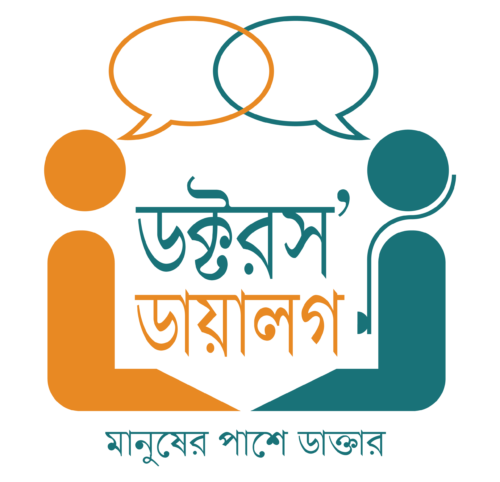

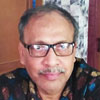


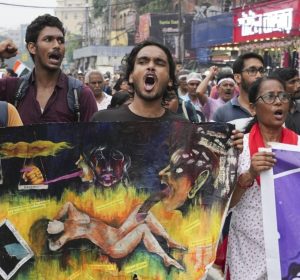
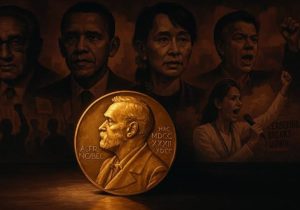
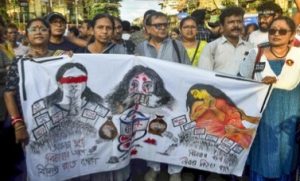
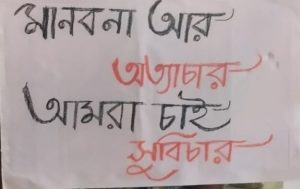
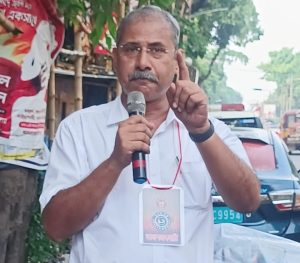
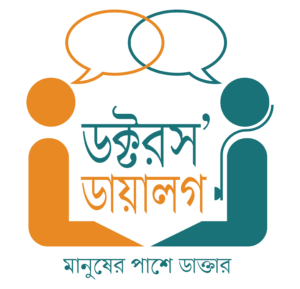





Sir,
Your writing continues to inspire Great job
Looking forward to reading more from you.
Keep up your very valuable, arduous pioneering dive into Sushruta Samhita.
Remember Poet Robert Frost (1922)
“The woods are lovely, dark and deep,
But I have promises to keep, And miles to go before I sleep, And miles to go before I sleep.”
I shall root for you all the way!
Kudos.
Good one sir